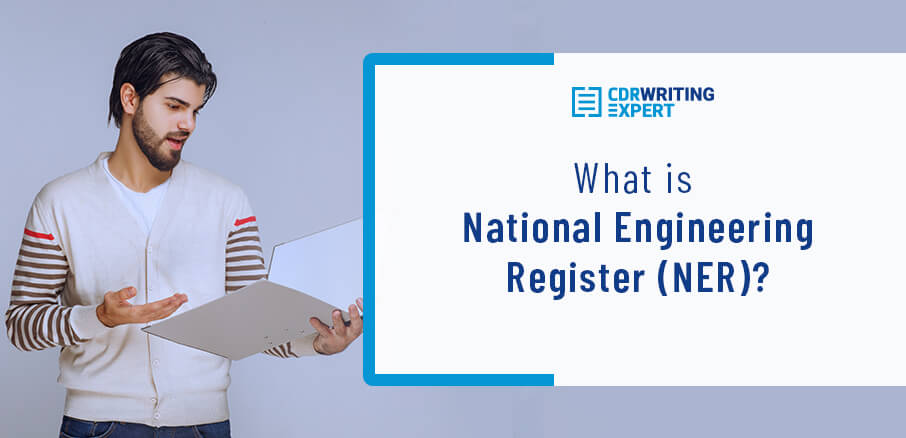
National Engineering Register (NER) is for the engineers in Australia who want to exhibit their experience, talents, and skills for the engineering industry and their prospective employers. It is a platform created by Engineers Australia from which professional engineers get changes to demonstrate their competencies. It provides a good career opportunity to grow in the engineering field. Suppose you want to be a part National Engineering Register. In that case, this article provides you the complete details for eligibility criteria, benefits, area of practices, and other more required things related to the National Engineering Register Australia.
Why should you register for the National Engineering Register (NER) Australia?
The National Engineering Register is regarded as a mark of excellence and professionalism throughout Australia. You will be listed in a searchable database that the general public can access once registered in this directory. This means you’ll be recognized as a professional engineer with the academic credentials, work experience, and skills that engineering industries demand.
The National Engineering Register is not like any other government-run directory with limited practice areas. It has a wide range of applications for employers who can use the information in this register to select qualified engineers for their company. It’s a way for talented and capable engineers to gain status and recognition in the engineering community.
The Eligibility Criteria for NER Engineers Australia
Engineers Australia establishes specific eligibility criteria for engineers for them to register with the NER. The following is a list of prerequisites:
- The applicants should hold relevant qualifications.
- Applicants should have prior professional experience that is relevant to the position.
- Applicants should pledge to act ethically.
- The applicants should maintain CPD.
- PI insurance should be available to the applicants.
Engineers who are already members of Engineers Australia can complete their registration by entering their EA ID into the portal. Engineers who are not members of Engineers Australia must pay the fees and undergo a separate registration process.
NER Areas of Practice
An applicant’s Areas of Practice denote the engineering profession with which their skills and work are aligned. The applicant’s areas of Practice are largely determined by their formal and informal education and work experience. There are nine general areas of Practice that all registrants can choose from. However, there are 15 areas of Practice that are only applicable to Engineers Australia Chartered members. For the applicants’ reference, engineers Australia provides descriptions of all areas of Practice.
General Area of Practice
General areas of Practice are open for those wanting to register on the NER with a minimum of 5 years of experience and those seeking Charted.
- Aerospace Engineering
- Biomedical Engineering
- Chemical Engineering
- Civil Engineering
- Electrical Engineering
- Environmental Engineering
- Geotechnical Engineering
- Mechanical Engineering
- Mechatronics Engineering
- Structural Engineering
- Subsea Engineering
- Information Telecommunication and Electronics Engineering (ITEE)
Special Area of Practices
Special Areas of Practice is open for those who are Chartered.
- Amusement rides and Devices Engineering
- Asset Management
- Building Services Engineering
- Cost Engineering
- Fire Safety Engineering
- Heritage and conservation Engineering
- Leadership and Management
- Naval Architecture
- Oil and Gas Pipeline Engineering
- Petroleum Engineering
- Pressure Equipment Design verification
- Project Management
- Risk Engineering
- Systems Engineering
The Application Process for NER Register
Step 1: Providing Work Experience Statement
The purpose of the work experience assessment is to ensure that the applicant’s technical skills are in line with the areas of Practice that they have specified. Engineers Australia has a self-assessment checklist that describes the roles, responsibilities, and skills applicants have acquired throughout their careers.
Step 2: Uploading the Continuing Professional Development statement (CPD)
When applying for NER Australia, you must show that you have completed continuing professional development (CPD) in the previous three years. Before applying for a National engineering register, applicants must show that they have completed 150 hours of CPD in the previous 12 months. The minimum hours required is 50 hours. It is also a requirement for registrants to conduct a CPD review every five years.
Step 3: Nomination of professional referees
Professional referees must be chosen by the applicants who can confirm all of their work experience details and evidence that they have mentioned in their work experience statement. One of the professional referees could be the applicant’s current employer. If the applicant has been with them for more than five years, the current employer can serve as the second referee. If not, it will have to be someone from their previous company. It is impossible to choose a friend to serve as a referee.
Step 4: Self-assessment of PI Insurance
Applicants must meet the requirements of the PI insurance benefit and demonstrate that they can maintain it when applying for the National Engineering Register. Applicants should check with their employers to see if PI insurance is available.
Step 5: Personal interview
Engineers Australia contacts professional referees by phone to discuss the case. Engineers Australia also conducts face-to-face interviews with applicants via video conferencing, Skype, and face-to-face interviews.
Applicants who are not engineers Australia members and want to join the National Engineering Register must also pass the stage 1 competency assessment. Engineers Australia assesses the qualifications, transcripts, CV, and career episodes against Australian standards during this phase.
Who are eligible to register for NER?
Engineers Australia Members in Each Occupational Category:
Registration is open to engineering associates, professional engineers, and engineering technologists with a minimum of five years in the industry and seven years in the field of practice. They must have relevant work experience, and you must confirm declarations during the interview with their CPD (Continuing Professional Development). They must also produce PII and show that they can keep it current.
Chartered Members of Engineers Australia:
Engineering technologists, professional engineers, and engineering associates benefit from PI insurance, which is maintained by Chartered Members of Engineers Australia.
Non-members of Engineers Australia:
In order to apply for NEA, non-members of engineers Australia must pass an assessment and show sufficient work experience and CPD statements that can be verified at the time of interview. While providing engineering services, the candidate should also have PII insurance and keep it up to date. Applicants whose universities are not accredited to Engineers Australia’s Accords must submit a Competency Demonstration Report. Along with three career episodes and a summary statement, CPD is an important part of a CDR report.
How long it takes to get registered for NER?
The application evaluation process usually takes 3 to 4 weeks. The period may be extended if the assessors require additional documents. Engineers Australia appoints individuals to its evaluation panel who are highly qualified and experienced. They also receive extensive training so that they can make an informed and unbiased decisions.

